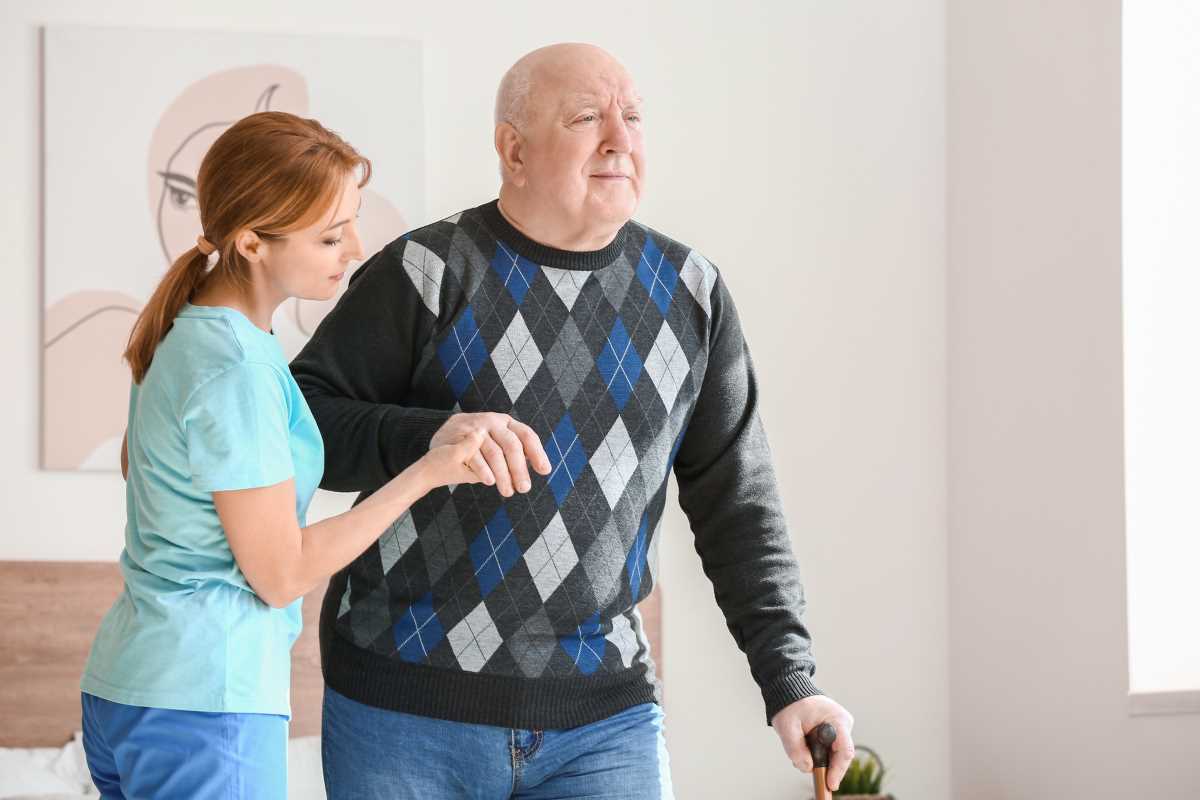Parkinson’s disease is a condition that impacts millions of people worldwide, but many don’t know the early warning signs to look out for. Often, the symptoms sneak up slowly and are easy to overlook or confuse with normal aging. However, catching the symptoms early can make a big difference in managing the disease effectively and maintaining a high quality of life.
Parkinson’s disease is a progressive disorder that affects the nervous system, specifically the parts of the brain that control movement. While it’s usually diagnosed in people over 60, it can appear earlier and is rarely the same for everyone. This guide will help you understand the most common signs and symptoms of Parkinson’s disease, both in its early stages and as it progresses.
What Is Parkinson’s Disease?
Parkinson’s disease (PD) occurs when nerve cells in the brain don’t produce enough dopamine, a chemical that plays a crucial role in controlling movement, mood, and other functions. Over time, these nerve cells break down, leading to a wide range of symptoms that worsen as the disease progresses.
While the exact cause of Parkinson’s disease remains unclear, certain factors may increase the risk:
- Age: Most cases occur in people over 60.
- Genetics: Having a close family member with PD slightly raises your risk.
- Environment: Exposure to certain toxins may contribute to nerve damage.
- Gender: Males are slightly more likely to develop Parkinson’s than females.
Now, let’s explore the signs and symptoms that could signal Parkinson’s disease.
Early Signs of Parkinson’s Disease
The early signs of Parkinson’s disease are often subtle and easy to miss. These symptoms can affect movement, mood, and even how someone feels on a daily basis. While experiencing one or two of these symptoms doesn’t necessarily mean you have Parkinson’s, it’s worth noting them and talking to a doctor if they persist.
1. Tremors
One of the most recognized symptoms of Parkinson’s is tremors, or shaking. These often start in the hands, fingers, or even a thumb, and happen while at rest. Tremors might also occur in the chin, jaw, or legs as the disease progresses.
Common Characteristics:
- A rhythmic, involuntary movement.
- Often starts on just one side of the body.
- Can become more noticeable with stress or anxiety.
2. Changes in Handwriting (Micrographia)
Handwriting changes are another possible early sign of Parkinson’s. The letters might become smaller, more cramped, or harder to read, a symptom known as micrographia.
What It Looks Like:
- Writing becomes smaller and more crowded together.
- Difficulty maintaining consistent letter size across a page.
If you’ve always had a steady handwriting style and notice a sudden change, it’s something to pay attention to.
3. Loss of Smell
A reduced sense of smell, known as hyposmia, can be one of the earliest signs of Parkinson’s and often occurs years before movement symptoms develop. People might find it harder to identify strong odors like coffee, flowers, or spices.
Why This Matters:
The loss of smell is linked to early damage in nerves that are crucial for sensory perception. While other conditions like sinus infections can cause temporary loss, a long-term change could point to Parkinson’s.
4. Slowed Movements (Bradykinesia)
Bradykinesia is a hallmark symptom of Parkinson’s disease. It refers to a general slowing down of movement, making it harder to perform everyday tasks.
Signs of Bradykinesia:
- Difficulty buttoning your shirt or tying shoes.
- Walking with shorter steps or dragging your feet.
- Reduced arm swing when walking.
Tasks that used to feel automatic may now require more effort and concentration.
5. Muscle Stiffness
Stiff or rigid muscles can make movement uncomfortable or even painful. This stiffness can occur anywhere in the body, including the neck, arms, and legs.
How It Feels:
- Trouble moving freely or feeling “stuck” in certain positions.
- Muscle stiffness that doesn’t go away, even with movement.
Stiffness in the arms might also make it hard to extend or rotate the joints.
6. Posture Changes and Balance Issues
People with Parkinson’s may notice a slight stoop or trouble maintaining their balance. Poor posture or unsteadiness can be an early indication of the disease.
Common Clues:
- Slouching forward or leaning slightly while standing or walking.
- Feeling unsteady or having difficulty recovering from minor stumbles.
7. Facial Expression Changes (Masked Face)
Some people with Parkinson’s experience a decrease in facial expressions because of reduced muscle control in the face. Known as masked face, this symptom can make it seem like someone is uninterested, sad, or unfriendly—even when they’re not.
Characteristics:
- Fewer smiles or natural facial movements.
- A “blank” or emotionless look.
This symptom can be subtle at first but may become more noticeable over time.
Advanced Symptoms of Parkinson’s Disease
As Parkinson’s progresses, the symptoms can become more pronounced, affecting not just movement but also mood, speech, and other bodily functions. Here are some advanced signs to watch out for.
1. Freezing Episodes
Freezing refers to a temporary feeling of being “stuck” in place, where someone cannot start or continue a movement, even though they’re trying. It’s particularly common when walking or changing direction.
Examples:
- Freezing mid-step or finding it hard to start walking again after stopping.
- Feeling stuck when trying to get out of a chair.
2. Speech Changes
Speech may become softer, monotone, or slurred as Parkinson’s affects the muscles used for talking.
Common Issues:
- Speaking more quietly than intended.
- Difficulty enunciating words clearly.
- Pausing mid-sentence or struggling to find the right words.
3. Sleep Disturbances
Parkinson’s often interferes with sleep patterns, causing issues like insomnia, vivid dreams, or restlessness during the night. It can also lead to movement disorders like restless legs syndrome.
4. Cognitive Decline
While not everyone with Parkinson’s experiences memory problems, some develop mild cognitive impairment or, in later stages, Parkinson’s disease dementia.
Symptoms:
- Trouble concentrating or making decisions.
- Forgetfulness that disrupts daily life.
5. Mood Changes
People with Parkinson’s are more prone to anxiety, depression, and apathy, likely due to both the physical and emotional burden of the disease and changes in brain chemistry.
6. Autonomic Dysfunction
Parkinson’s can affect the autonomic nervous system, which controls involuntary functions like digestion and blood pressure. Symptoms include:
- Constipation.
- Excessive sweating.
- Low blood pressure when standing up (orthostatic hypotension).
When to See a Doctor
If you notice one or more of these symptoms in yourself or a loved one, especially if they’re persistent, it’s a good idea to consult a doctor. A neurologist can evaluate the symptoms and potentially diagnose Parkinson’s through:
- Exams and Tests: Assessing balance, coordination, and movement issues.
- Medical History: Reviewing symptoms and family history.
- Imaging: Occasionally, brain scans may help rule out other conditions.
Early detection can make a big difference in managing Parkinson’s and slowing its progression.
Managing Parkinson’s Disease
Although there’s no cure for Parkinson’s, treatments can significantly improve quality of life. Management strategies typically include:
- Medications: Drugs like carbidopa-levodopa can help replenish dopamine or improve its effectiveness.
- Physical Therapy: Exercises to maintain mobility and reduce stiffness.
- Speech Therapy: Helps with voice projection and clarity.
- Lifestyle Changes: Maintaining a healthy diet, staying active, and reducing stress.
 (Image via
(Image via





